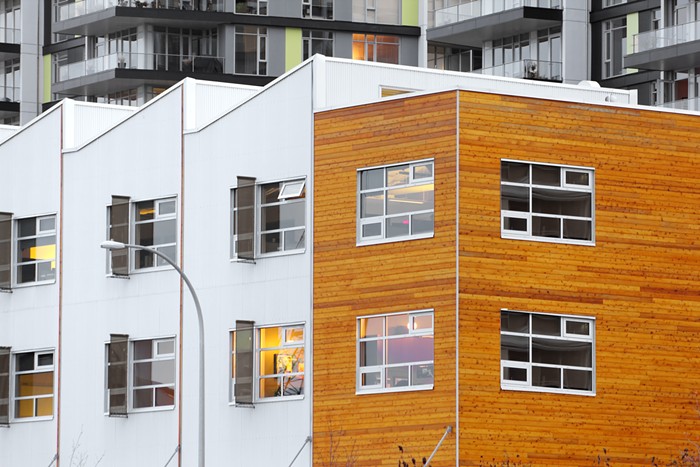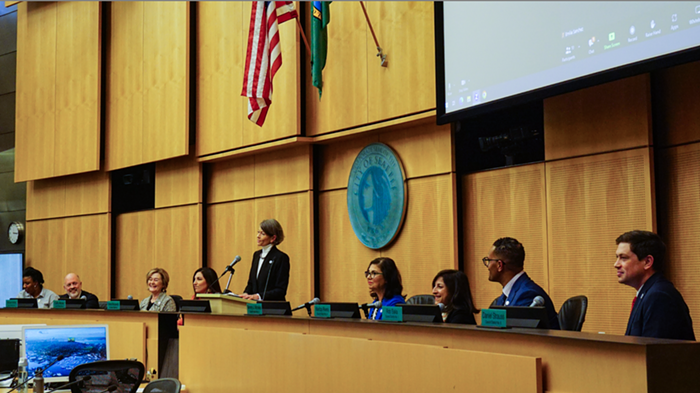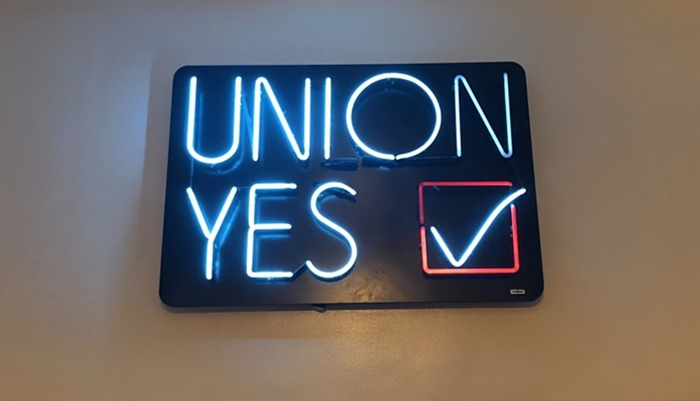Let There Be Light
City Council Member David Della issued a warning at the April 21 hearing: "I can adjourn the hearing if disruptive behavior continues." In the crowd, where sports enthusiasts and Magnuson Park neighbors were brandishing competing signs for and against a city plan to build sports fields, security officers were patrolling the aisles.
It never came to fisticuffs, but there was some heckling; Magnuson neighbor Basia Belza drew boos when she stated, "Organized sports is not a cure for obesity!" and recommended walking instead. There was also some cheering; rugby leaguer Andrea "Wheels" Stamm got a hand when she shot back, "Walking is boring!"
The evening's standoff was over a parks department plan to build 11 lighted sports fields at Magnuson. The fields will take up just 7 percent of the park. Still, neighbors fear the plan spells trouble: noise, traffic, and late-night lights. (Gosh, you'd think we live in a city or something.)
At the hearing, neighbors seized on a recent study that appeared to render the project unnecessary: Seattle already has more sports fields per capita than any other western city.
The problem with that argument is this: The April 19 study, written by legislative staffer Bill Alves, said a lot of other stuff too, like there's "a substantial shortage of sports fields in Seattle." So, saying Seattle has more sports fields per capita than other cities is like saying Seattle has more black people per capita than Spokane, Olympia, or Portland. Listen to Alves' report: "Is there an unmet demand for sports fields in Seattle? Definitely... citywide, 80,000 to 100,000 field hours of reasonable demand is going unmet [annually]." For example, Seattle's Co-Rec soccer league had to play 2,800 games, more than half its weeknight schedule, outside of Seattle last season.
The report also busts another neighborhood argument: Neighbors have suggested retrofitting the city's 300 existing sports fields with Magnuson's money. Well, the neighbors should read Alves' report: It would cost $100 million to retrofit fields citywide, while it will cost about a quarter of that to develop Magnuson. And as the report also says, "Not all Seattle's fields are candidates [for retrofitting]... because of the inability to mitigate neighborhood impacts."
This is important. Fields like Ravenna's Bryant Park and Rainier Valley's Genesee Park are located in the middle of communities. Invading community after community with lighting and construction to cobble together a network of fields is inefficient. The parks department is wise to look to Magnuson, which is tucked away on a peninsula, across a main thoroughfare from View Ridge--home to much of the anti-playfield crowd.
Magnuson is also one of Seattle's two biggest parks. Remember, the 11 fields will take up just 7 percent of Magnuson's 320 acres, knocking down an abandoned 93,000-square-foot Navy building in the process. The council will discuss the issue next on May 5. Let's hope that, unlike sports-field opponents, they read Alves' report thoroughly before voting.

















